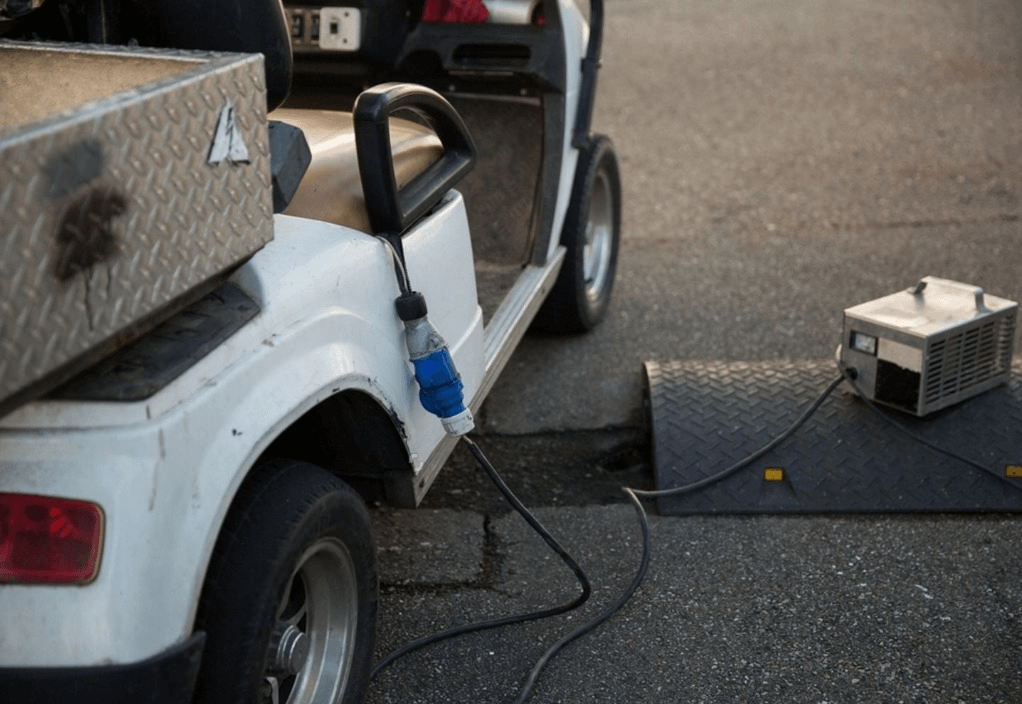How Long Does a Golf Cart Battery Last? A Complete Guide
Wondering how long your golf cart battery will last? Like a trusty caddie, your golf cart's battery is essential for those relaxing rounds on the course, but its lifespan isn't always straightforward. Whether you're cruising the fairways or using your cart for other activities, understanding battery longevity can save you from unexpected power-downs. From traditional lead-acid to modern lithium options, golf cart batteries typically last several years with proper care and maintenance. However, factors like usage patterns, climate conditions, and charging habits play crucial roles in determining their actual lifespan.
Let's explore everything you need to know about golf cart battery longevity – from average lifespan and charging cycles to warning signs of battery failure and essential maintenance tips that will keep your cart running smoothly throughout the season and beyond.
How long does a golf cart battery last?
A typical golf cart battery lasts between four to six years with proper maintenance, outlasting many standard automotive batteries. This impressive lifespan is due to their specialized deep-cycle design, which allows them to handle repeated discharge cycles that would damage regular car batteries. Unlike car batteries that suffer permanent damage when drained to 75% of their capacity, golf cart batteries are engineered with thicker plates and specialized chemistry that enables them to safely discharge down to 20% of their power.
The longevity of golf cart batteries isn't just about their robust construction – it's also tied to their unique purpose. These 6-volt or 8-volt batteries are specifically built for sustained power delivery rather than the quick bursts of energy needed to start a car. Their internal design prioritizes steady, reliable performance over thousands of charging cycles, making them ideal for regular golf course use.
It's worth noting that while four to six years is the average lifespan, some golf cart batteries can last even longer with meticulous care. Regular maintenance, including proper water levels and consistent charging habits, plays a crucial role in achieving the maximum lifespan. The key to reaching this full potential lies in understanding that these batteries are more like marathon runners than sprinters – built for endurance rather than short bursts of power.
How long does a lithium battery last on a golf cart?
Lithium golf cart batteries offer exceptional longevity, typically lasting 10 years or longer with proper maintenance. While they require a higher initial investment compared to traditional lead-acid batteries, their extended lifespan and superior performance characteristics often make them more cost-effective in the long run.
The remarkable durability of lithium batteries comes from their unique chemical composition. Unlike lead-acid batteries that rely on lead metal and sulfuric acid interaction, lithium batteries generate power through lithium ion movement. This fundamental difference makes them particularly well-suited for partial charging cycles, similar to your smartphone battery.
These batteries perform best when charged before being fully depleted – ideally when 30% to 40% power remains. This partial cycling capability, combined with their inherent chemical stability, contributes significantly to their decade-plus lifespan potential, making them an attractive option for golf cart owners focused on long-term value despite the higher upfront cost.

Factors affecting golf cart battery life
Several key factors influence how long your golf cart batteries will last:
- Usage Patterns & Discharge Depth: Avoid deep discharges (below 20%) to extend battery life. Regular, moderate use with partial discharges is best.
- Temperature & Climate: Extreme heat speeds up wear, while freezing temps reduce efficiency. Store your cart in a climate-controlled space to protect the battery.
- Charging Habits & Maintenance: Follow proper charging practices—avoid overcharging or undercharging. Regularly check water levels, clean terminals, and maintain electrolytes for longer battery life.
- Battery Quality & Type: Invest in high-quality batteries. Lithium batteries last longer than lead-acid but have a higher upfront cost.
- Load Weight & Terrain: Overloading or driving on steep hills and rough terrain stresses the battery, leading to faster wear.
5 signs your golf cart battery is dying
If you're noticing any of these signs, your golf cart battery might be nearing the end of its life. Identifying these issues early can help you avoid getting stranded and ensure your golf cart continues to run smoothly.
Longer Charging Times
If your golf cart's battery is taking much longer than usual to charge (over 8-10 hours), it's a clear sign of a deteriorating battery. As batteries age, they struggle to hold a charge, leading to slower recharge times.
Reduced Acceleration
A golf cart with a weak battery may struggle to accelerate, especially when going uphill. If your cart seems sluggish or takes longer to reach speed, it could indicate that the battery is losing power.
Shorter Driving Range
Is your golf cart running out of power after only a short distance? If your cart used to last a full round of golf and now only lasts a mile or two before needing a recharge, it's time to consider replacing the battery.
Battery Leaks or Spills
Leaks are a serious sign that something is wrong with your battery. Lead-acid batteries, in particular, may leak harmful acid. If you notice any puddles or residue around the battery, it's essential to replace the battery immediately to avoid further damage.
Visible Battery Damage
Cracks, bulges, or corrosion around the battery terminals are signs of battery deterioration. Overheating or poor maintenance can cause the battery casing to crack or the terminals to corrode, leading to costly repairs and potential safety hazards.
By recognizing these warning signs early, you can replace your golf cart battery before it completely fails, ensuring a smooth and uninterrupted golfing experience.
How long will a golf cart battery last on a single charge?
On average, a fully charged golf cart battery will last between 25 to 40 miles on a single charge. This range can be influenced by factors such as the battery type (lithium batteries generally last longer than lead-acid), the terrain you're driving on, and the weight of the cart's load. For most golf course use, a single charge should easily last for several rounds of golf before needing to recharge.

How long does it take to charge a golf cart battery?
The time it takes to charge a golf cart battery depends on several factors, including the type of battery, its size, and the charger you are using. For lead-acid batteries, the typical charging time is between 8 to 12 hours. A simple way to estimate charging time for lead-acid batteries is to check the battery's amp-hour (Ah) rating and divide by 10. For example, a 150 Ah lead-acid battery should take about 15 hours to charge with a 10-amp charger. The charging time can vary depending on the charger's output and how much charge is left in the battery.
On the other hand, lithium batteries generally charge faster, usually in about 4 to 6 hours, due to their higher efficiency. However, it's important to note that both lead-acid and lithium batteries should not be drained completely. Draining your golf cart battery to zero can cause permanent damage. In lead-acid batteries, this leads to sulfation, where the active material hardens and reduces the battery's ability to hold a charge. With lithium batteries, fully discharging them can cause irreversible damage to the battery's capacity by permanently bonding lithium metal to the other material in the battery. To keep your battery healthy, it's best to recharge it after each use. Regular charging ensures optimal performance and helps extend the lifespan of your golf cart battery.
Tips to make your golf cart batteries last longer
Taking proper care of your golf cart batteries is essential for ensuring they last as long as possible. With just a few simple habits, you can extend their lifespan and avoid the cost of early replacements.
Charge Regularly and Avoid Overcharging
Make it a habit to charge your batteries after each use, even if you haven't drained them completely. Try to avoid letting the battery go below 20% for lithium batteries or 50% for lead-acid. Overcharging can damage the battery, while running it too low can cause long-term wear and reduce capacity.
Don't Let Your Battery Fully Die
It's tempting to keep using your golf cart until the battery dies, but doing so can shorten its life. Lead-acid batteries, in particular, can develop sulfation when drained too much. Always aim to keep the battery's charge above 50% for lead-acid and 20% for lithium.
Use the Right Charger
Not all chargers are equal, so investing in a good-quality charger is important. A charger designed for your specific battery type will charge efficiently and prevent damage from overcharging. Always follow the manufacturer's instructions for optimal charging.
Store Your Batteries Properly
Temperature matters. Extreme heat or cold can reduce battery life, so store your golf cart in a cool, dry place. If you won't be using it for a while, consider removing the battery and storing it in a climate-controlled area. A battery maintainer can keep it charged without overcharging during long-term storage.
Minimize Strain on Your Battery
Avoid pushing your golf cart up steep hills or overloading it, as this drains the battery faster. Stick to flat terrain and avoid heavy lifting to keep your battery from wearing out too soon.
Inspect and Maintain Regularly
Make regular inspections part of your routine. Look for corrosion on the terminals, clean them if necessary, and check water levels for flooded lead-acid batteries. Periodically test the voltage to catch potential issues early.
Keep Your Battery Clean and Dry
Moisture and dirt can harm your battery's performance. Keep the terminals clean and dry, and wipe away any debris or corrosion to ensure proper function.
Conclusion
Whether you're using traditional lead-acid batteries or upgrading to lithium options, taking the time to care for your battery can make all the difference in how long it lasts. By following proper charging practices, maintaining good storage habits, and performing regular checks, you can maximize your battery's lifespan and avoid unexpected downtime.
Just like your golf game, maintaining your golf cart battery is all about consistency and care. With a little attention, you can enjoy smooth, reliable rides for years to come. So, keep your battery in top shape, and you'll be ready to take on the course—or the neighborhood—whenever you need it!
FAQs
How much does it cost to replace a golf cart battery?
Replacing a golf cart battery is a necessary expense, but understanding the costs can help you plan. Individual battery prices range from around $80 for basic lead-acid to over $300 for premium lithium-ion options. Keep in mind that most carts require multiple batteries, so the total replacement cost can be significant. Considering that a well-maintained battery can last four to six years, investing in proper care and charging practices can save you money in the long run by delaying the need for replacements.
Should I leave my golf cart plugged in all the time?
Leaving your golf cart plugged in constantly can lead to overcharging, which can damage the battery and reduce its lifespan. While newer "smart" or "automatic" chargers can prevent overcharging by switching to a maintenance mode, it's still best practice to unplug the charger once the battery is fully charged. This prevents unnecessary stress on the battery and helps it achieve its full potential lifespan of four to six years. Leaving it unplugged also saves on electricity.











